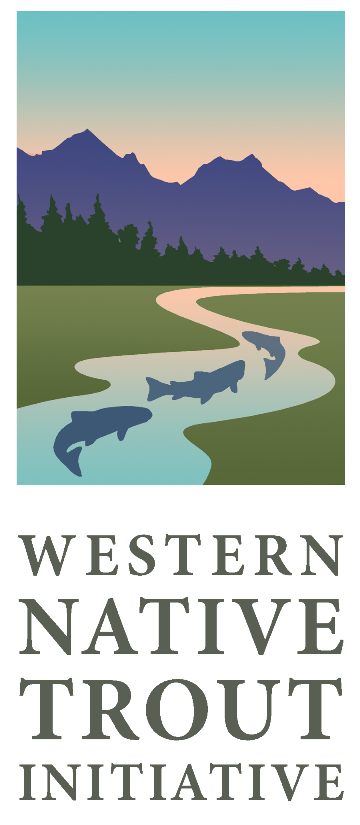
Beginning with a strategic prioritization process initiated in 2017 by the Western Native Trout Initiative’s (WNTI) Steering Committee, WNTI has worked with the Interagency Interior Redband Trout Conservation Agreement team partners to elevate and accelerate conservation to increase the resilience of Interior Redband Trout populations through habitat protection and enhancement, and by improving habitat connectivity, particularly in drainages that span jurisdictions and have significant private ownership. One of the places WNTI has been able to focus our efforts is in the Warner Basin, in Southeastern Oregon, where we have built a portfolio of 10 projects to open 38.25 stream miles in Honey and Deep Creek by 2025 and document Warner sucker and Warner Lakes Redband Trout passage at each diversion. Project partners will complete fish passage projects with the three irrigation districts in the Warner Basin, requiring the support of the local community, landowners, and irrigators. The project scope is to complete a watershed scale approach to open access for listed species of fish that will start from the lower stream basin and work upstream until all barriers have been completed for fish passage, screening, and efficient water diversion for irrigators. The project includes 10 high priority structures to be completed over a 7 year period for a total cost of $10,204,756.
Limited water in the eastern Oregon desert means that Warner Basin streams are a critical water source to both irrigators and native fish. Several Warner Basin streams provide both irrigation water critical to local ranches, and spawning, rearing, and migratory habitat for Warner sucker, Warner Basin Redband Trout, and other native fishes. The low-lying portion of the Warner Basin provides the most fertile agricultural land in the area, as well as stream reaches critical to fish migrating from the large lakes in the valley upstream to high quality spawning and rearing habitats. More than 10 diversions exist in the lower basin that provide water to irrigators and have been identified as fish passage barriers. The diversions make it impossible for large fish that rear in the Warner Lakes to access the prime spawning grounds in the upper basin on lands primarily administered by the Lakeview BLM and the Fremont Winema National Forest.
For the last decade, the Warner Basin Aquatic Habitat Partnership has both independently and collaboratively worked to restore passage and connectivity for aquatic species in the Warner Basin, specifically the Warner Redband Trout, a state and federal species of concern, and the Warner sucker, an ESA listed threatened species. While each organizations’ role has been slightly different (i.e., monitoring, planning, outreach, or implementation) the vision was always the same: species recovery. The key to bringing this vision together is building relationships with the local ranching community of Adel and Plush, Oregon. Agriculturally based, the Warner Basin is primarily managed to produce hay and raise beef cattle. Water is critical to both agriculture and fish habitat in the basin. Community benefit is based on building and maintaining relationships with the local ranching community of Adel and Plush, Oregon. Agriculturally based, the Warner Basin is primarily managed to produce hay and raise beef cattle. Water is critical to both agriculture and fish habitat in the basin. Irrigation diversions and ditches have been identified as a primary threat to fish recovery in the basin. In the past five years, the Lake County Umbrella Watershed Council, Soil and Water Conservation District, and their partners have tirelessly worked to improve these relationships by attending monthly water meetings and collaborating on ideas to put restoration actions on the ground. The partnership has successfully implemented projects that have provided local ranches with improved irrigation efficiency, while also providing for fish passage at diversions. Within Deep Creek and Honey Creek many of the landowner operations are transitioning to fourth generation family members and these projects will allow for viable operation and upgrade to deteriorating infrastructure that will provide safer operation and reduced maintenance. Community benefits will also draw upon hiring local construction companies and businesses that can supply the materials and equipment to complete the project. These projects will financially support jobs and recreational opportunity within these small communities. Watch a film about this partnership here.
The list of projects that are included in this portfolio:
Deep Creek
- Deep Creek Canyon Diversions: O’Keefe, Middle Diversion, Givan’s (Taylor) Weir READ the Middle Diversion final report
- Town Diversion READ the Town Diversion final report
- Starveout Diversion READ the Starveout Diversion final report
- Relict Weir READ the Relict Weir final report
Honey Creek
- JJ Diversion (Honey Creek)
- Town Diversion (Honey Creek)
- Lower Honey Creek Diversions: Hidden Diversion, Middle Ditch Diversion, East Field, and Fish Hatchery Diversions
We are still working to further build out this page and add links for more detailed information about each project WNTI has collaborated on. Please check back later!
